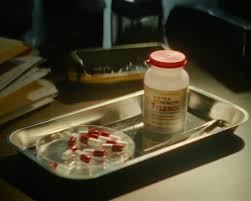
Introduction
The Tylenol murders represent one of the most shocking and impactful criminal cases in American history. In 1982, seven individuals in the Chicago area died after ingesting Tylenol capsules laced with cyanide. This incident not only led to widespread panic but also prompted significant changes in safety regulations for over-the-counter medications and packaged products. The importance of this case lies in its implications for public safety and consumer trust, making it a topical discussion even decades later.
The Tragic Events
In September 1982, the Tylenol killings began when 12-year-old Mary Kellerman of Elk Grove Village, Illinois, consumed Extra-Strength Tylenol and died shortly thereafter. Following her death, six others, including adults, died under similar circumstances after taking Tylenol capsules. Health authorities quickly discovered that the common link among the victims was the Tylenol product they had ingested. Investigations revealed that they had taken capsules contaminated with potassium cyanide, leading to a nationwide panic.
Investigation and Fallout
The investigation into these murders was extensive and involved federal, state, and local law enforcement agencies, including the FBI. Despite intensive searches and media coverage, no definitive suspect was ever found. Although various theories emerged, the case remains officially unsolved, leaving lasting questions about the identity of the perpetrator.
In the wake of the murders, Johnson & Johnson, the parent company of Tylenol, acted swiftly by recalling over 31 million bottles of the product, a move that cost the company an estimated $100 million. The incident led to a significant shift in how over-the-counter medications were packaged, leading to tamper-proof seals and the establishment of stricter regulations by the FDA.
Impact on Consumer Safety and Regulations
The Tylenol murders had far-reaching implications for public safety. The case prompted Congress to pass the Federal Anti-Tampering Act, which made it a federal offense to tamper with consumer products. Furthermore, manufacturers began employing new packaging innovations to enhance consumer protection, such as seals and child-resistant caps, which have since become industry standard.
Conclusion
The Tylenol murders remain a pivotal moment in American history that not only shocked the public but also prompted lasting changes in consumer safety regulations. The unresolved nature of the case continues to intrigue both criminologists and amateurs alike, highlighting the potential vulnerabilities in drug safety and public health. As we reflect on this tragedy, it serves as a reminder of the ongoing need for stringent safety measures in consumer products. The lessons learned from this case are still relevant today, particularly in light of rising concerns about product tampering and consumer safety.




